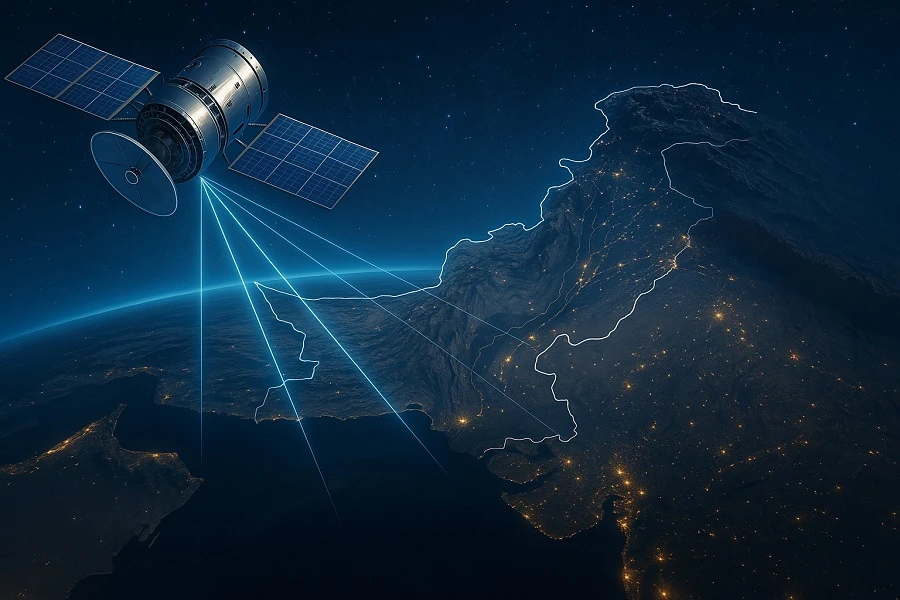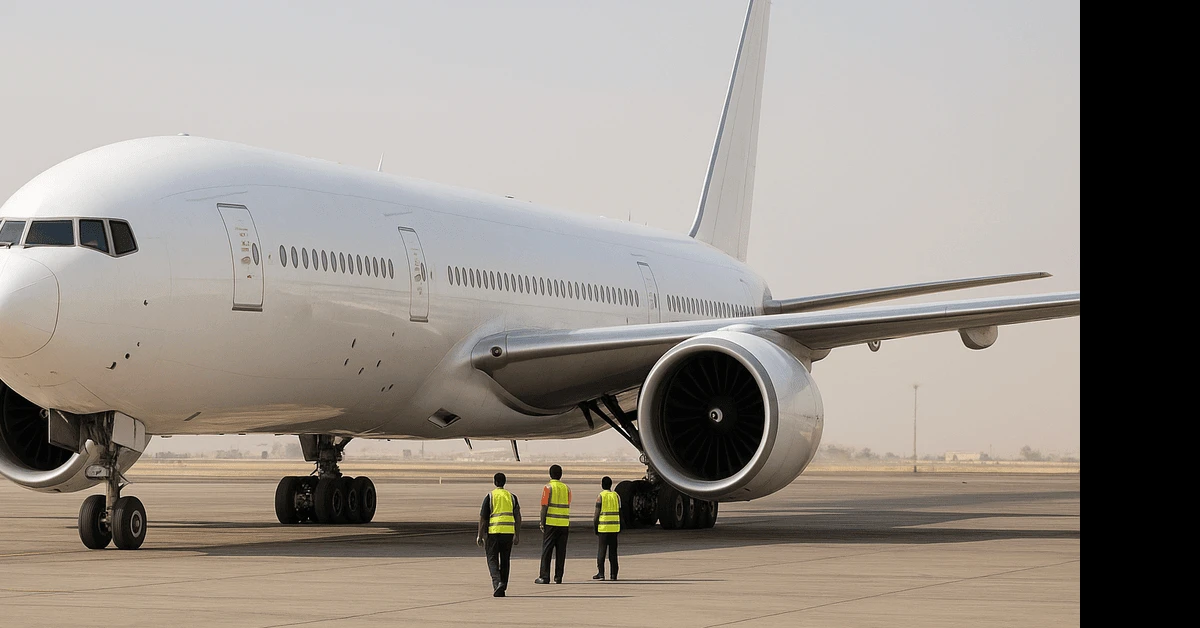Last Updated: July 2, 2025
Starlink and the Race for Satellite Internet in Pakistan: What You Need to Know in 2025

Introduction
Pakistan's digital landscape is on the cusp of a major transformation as the world’s leading satellite internet provider, Starlink, prepares to enter the market by the end of 2025. With increasing demand for reliable and high-speed internet, especially in rural and underserved areas, Starlink’s arrival could mark a turning point for the country’s connectivity infrastructure. The government has granted initial clearance to the company, and regulatory frameworks are being finalized.
But Starlink is not alone in this race. Chinese players like Shanghai Spacecom have also shown interest in tapping into Pakistan’s growing internet needs, suggesting fierce competition is on the horizon. This comprehensive article covers everything you need to know—from pricing and service packages to regulatory updates and how Starlink compares to both local ISPs and new Chinese entrants.
The Demand for Satellite Internet in Pakistan
Over the past decade, Pakistan has made considerable strides in internet penetration. As of 2025, over 130 million people in Pakistan have access to the internet, yet many regions—especially rural and mountainous areas—remain underserved. Traditional ISPs often struggle with infrastructure limitations and power outages, making satellite internet an attractive alternative.
Satellite internet can offer stable connectivity regardless of geography, making it ideal for countries like Pakistan with varied terrain. This is where Starlink and its low-Earth orbit (LEO) satellite technology comes into play, promising high-speed internet across the country.
The government’s push toward a Digital Pakistan has made technology inclusion a national priority, but infrastructure development has lagged behind. Satellite services can help fast-track this goal, supporting education, telemedicine, and e-commerce in remote locations.
Starlink’s Entry into Pakistan: Timeline and Government Approvals
In early 2025, SpaceX’s Starlink secured a temporary no-objection certificate (NOC) from Pakistan's Space and Upper Atmosphere Research Commission (SUPARCO) and the Pakistan Telecommunication Authority (PTA). This allows the company to begin preliminary operations in Pakistan.
According to the Minister of State for Information Technology and Telecommunication, Shaza Fatima Khawaja, Starlink is expected to begin full operations by November or December 2025. The PTA is currently drafting a detailed regulatory framework for satellite internet, and Starlink will need to reapply for a full commercial license once these policies are finalized.
Chinese Players Entering the Arena: Shanghai Spacecom
One of the key Chinese contenders in the race to provide satellite internet in Pakistan is Shanghai Spacecom. This company has officially submitted an application to operate in Pakistan and is awaiting regulatory clearance.
Shanghai Spacecom has experience in offering satellite communication solutions across Asia and Africa, and its interest in Pakistan indicates the strategic importance of the South Asian market. Although specific details about its service packages and pricing have yet to be revealed, the company is expected to target both enterprise and remote user segments.
The arrival of Chinese companies could drive competitive pricing and faster rollout of services—beneficial for consumers but potentially challenging for local ISPs.
There are also strategic geopolitical implications. China's increasing technological footprint in Pakistan reflects deeper bilateral ties and infrastructure collaboration under CPEC (China-Pakistan Economic Corridor).
Starlink Pricing in Pakistan: What to Expect
While official pricing is still pending regulatory approval, early indications suggest that Starlink’s service tiers in Pakistan will mirror global offerings, adjusted for local currency and market dynamics.
- Residential Package
Monthly Fee: PKR 35,000
Speed: 50–250 Mbps
One-Time Equipment Cost: PKR 110,000 - Business Package
Monthly Fee: PKR 95,000
Speed: Higher bandwidth, priority support
Equipment Cost: PKR 220,000 - Mobility/Roaming Package
Monthly Fee: PKR 50,000
Portable unit suitable for moving vehicles or remote setups
Equipment Cost: PKR 120,000
Comparison with Local ISPs
| Provider | Monthly Cost (PKR) | Speed (Mbps) | Availability |
|---|---|---|---|
| PTCL | 2,500–5,000 | 20–100 | Urban & semi-urban |
| Nayatel | 2,000–7,000 | 30–250 | Limited to cities |
| StormFiber | 2,000–6,500 | 30–200 | Major cities only |
| Starlink | 35,000+ | 50–250 | Nationwide, including remote areas |
Reliability and Performance
Starlink has gained a reputation for reliable, low-latency internet with speeds rivaling fiber optics in many countries. Thanks to its constellation of over 5,000 low-orbit satellites, users experience:
- Latency as low as 20–40ms
- Stable performance in all weather conditions
- Minimal downtime
The low latency makes Starlink particularly useful for applications such as:
- Online gaming
- Video conferencing
- Real-time stock trading
Regulatory Hurdles and Compliance
The PTA and SUPARCO are jointly working to ensure that satellite-based services adhere to national security, data privacy, and spectrum usage policies. The Pakistani government has also hired international consultants to help develop an appropriate regulatory framework.
User Perspective: Bridging the Digital Divide
Imagine a school in Skardu or a clinic in Gwadar gaining access to high-speed internet for the first time. That’s the transformative potential of Starlink and its counterparts. Local NGOs and development organizations could leverage these networks for social upliftment projects.
Even small businesses in remote areas would have the chance to access global markets, streamline supply chains, and use cloud-based services without interruptions. This paradigm shift could be pivotal in making rural Pakistan economically competitive.
Future Prospects: 2025 and Beyond
Starlink’s arrival could spark a digital revolution, but success will depend on factors like affordability, competition, and regulatory support. In the long run, this development could:
- Bridge the urban-rural digital divide
- Empower e-learning and telemedicine
- Attract global tech investment
- Improve disaster response communications
Final Thoughts
The upcoming launch of Starlink and the expected entry of Chinese companies into Pakistan’s internet sector represent a monumental shift. With more players and technology options on the horizon, 2025 could be a defining year for digital connectivity in Pakistan.
While affordability remains a concern, the long-term benefits—especially in rural development, education, and economic growth—are promising. Pakistan must now strike the right balance between regulation and innovation to fully capitalize on this opportunity.
You May Also Like:

Petrol Price Drop in Pakistan on April 16, 2025: What You Need to Know...

How Internet Shutdowns & Censorship Are Damaging Pakistan’s IT Exports and Freelance Reputation...

The Silent War on Undersea Cables: Who Really Controls the Internet’s Backbone?...

Shahid Khaqan Abbasi Suffers Heart Attack: What We Know, What It Means and What Comes Next...

Boeing 777 Grounded at Jeddah: What We Know and Why It Matters...

Why Most Businesses Fail and How to Avoid Common Mistakes (So You Don’t Fall into the Same Trap)...

WNBA Pay Us What You Owe Us Rally: Why Players Are Demanding Fair Pay and What Happens Next...

